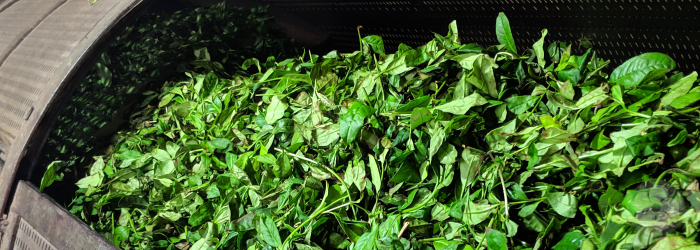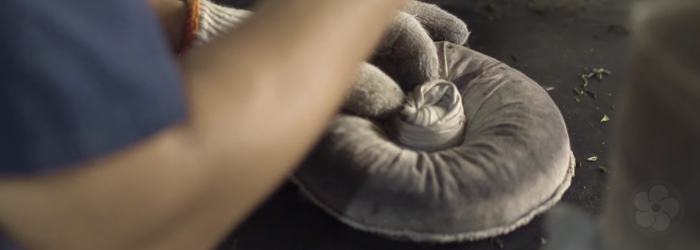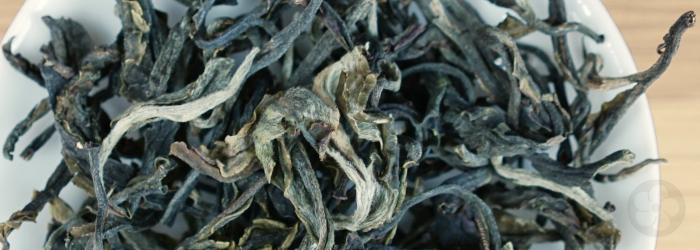Types of Pu-erh: What is Maocha?

In the broad context of processing teas, the term maocha refers to an unfinished stage: wilted, partially roasted, or otherwise not fully dried and finished. While this unfinished tea might be tasted to gauge the development of flavor or sold to third party roasters, it is almost never offered for sale to consumers, since it is not preserved for storage. On the unusual spectrum of pu-erh production, however, maocha also includes teas that are dried or pressed but not yet aged.
Rising prices for well-aged examples have driven the market to develop alternatives. ‘Cooked’ or ‘ripe’ shou pu-erhs, intended to imitate the effects of long-term aging with an accelerated process of fermentation, are common, but low-quality examples abound. Poorly made shou pu-erhs are often described as tasting fishy or mildew-like, and even relatively good examples can lack the complexity of naturally aged sheng pu-erh.
Learn more about the distinction between shou and sheng pu-erh teas >>

In recent years, pu-erh producers have found a market for sheng teas that are not yet aged. With leaves that are still green in color, these teas are referred to as maocha, or unfinished tea, despite the fact that they are fully dried. Rather than putting them into storage for ten years before finding a buyer, these teas are now sold as-is to the consumer market. While some pu-erh drinkers value these green versions for their existing flavor, others may buy them as an investment, with the intention to age them independently.
For Drinking
Because these teas are designed for aging, their flavor is usually remarkably bold, astringent, and often bitter. Over time, these characteristics can mellow into a dark, smooth mouthfeel, but they can also be appreciated in their ‘raw’ form with careful brewing. Before aging, they resemble a summer harvest green tea, but typically contain more mature leaves, which contribute to a harsher flavor profile. High quality examples are harvested from older tea trees than standard green teas as well, lending additional flavor complexity. Using short, hot, steeps, green pu-erhs can yield more infusions than traditional green teas, with greater variation in flavor over the course of several brews.

For Aging
Connoisseurs, both in China and abroad, might also buy unfinished maocha leaves in order to control the aging process themselves. Because this is a long term investment that can be tricky to manage, we don’t recommend this for casual drinkers. Selecting a tea that will age will takes an experienced palate, and aging a tea well requires careful consideration of the storage environment. Our climate in North America, for instance, is generally much less humid than southern China. While we enjoy the unusually bright, crisp flavor that we have experienced, an environment that is too dry can even kill off the microbial activity that causes fermentation altogether.
Flavor contamination from storage conditions is also a potential concern when storing teas at home, with potential impact from storage box material or nearby scents. Many connoisseurs interested in aging their own teas invest in a climate controlled box to manage temperature, humidity, and surrounding flavor influences.

We’ve recently added our first green pu-erh to the Red Blossom collection: our new Jingmai Sheng, Spring. Harvested at a high elevation from mature tea trees, we’re enjoying the long-lasting finish that comes with its slight astringency, and looking forward to seeing how it develops over time.
Have you tried any green maocha pu-erhs? Let us know your thoughts in the comments below!
Sign up for our newsletter to get blog updates in your inbox!



Comments on this post (0)